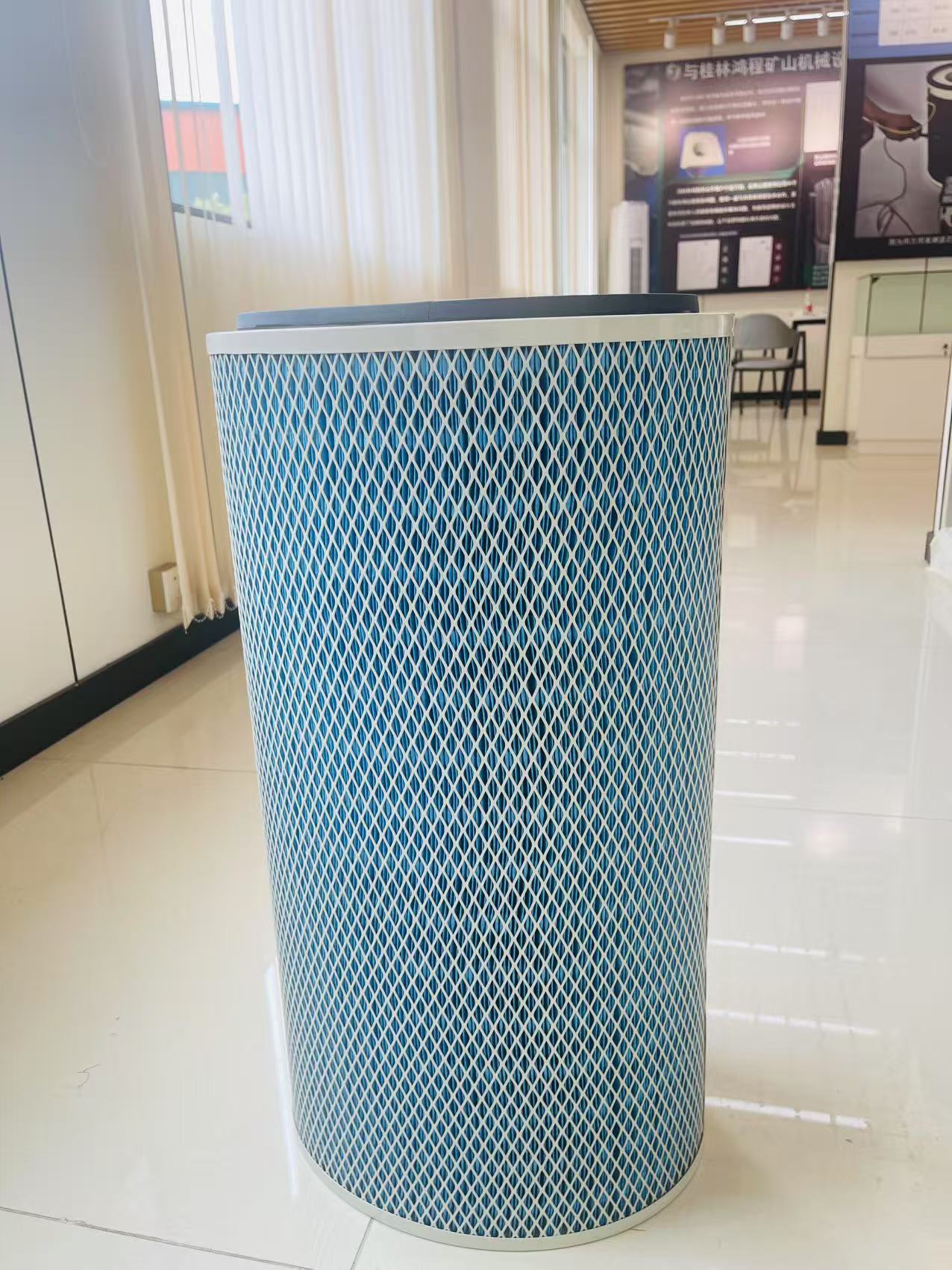Filter Cartridges
-
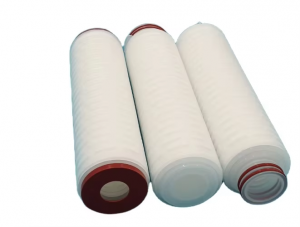
Unveiling the Filter Cartridge: A Silent Guardian in Filtration Systems
In the intricate world of filtration, whether for water purification, air handling, or industrial fluid processing, the filter cartridge stands as an unsung hero. These unassuming cylindrical components, like the ones pictured, play a pivotal role in maintaining the purity of substances flowing through systems.Filter cartridges boast a cleverly engineered pleated structure. This design isn’t just for show – the folds maximize the surface area available for filtration, allowing them to trap everything from tiny sediment particles in water to airborne dust in ventilation systems. In water treatment, they act as the first line of defense, sifting out rust, sand, and organic impurities that could compromise water quality. In industrial settings, they shield expensive machinery from damaging contaminants, ensuring smooth operations and reducing maintenance costs.Beyond water, their versatility shines in air filtration too. HVAC systems rely on them to clean incoming air, removing pollutants that affect indoor air quality. Even in specialized fields like pharmaceutical manufacturing, where precision is paramount, filter cartridges ensure fluids and gases meet stringent purity standards.Though their form is simple, their impact is profound. They quietly safeguard our daily water supply, keep industrial processes running efficiently, and contribute to healthier indoor environments. The filter cartridge, a testament to engineering ingenuity, proves that even the smallest components can have a giant role in our interconnected systems of health, industry, and daily life. -
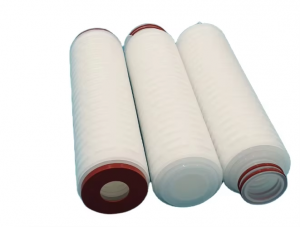
The Secret of the “Little Guardian” in Water Treatment —— Filter Cartridge
In industrial and daily – life scenarios such as water treatment and air purification, there is a type of component that seems ordinary but is of crucial importance. It is the filter cartridge, also often referred to as the filter element or filter (filter cylinder).In terms of appearance, the filter cartridge is mostly in a simple cylindrical shape, just like what is shown in the picture. Its unique pleated structure should not be underestimated. This design greatly increases the filtration area, enabling it to function more efficiently. Whether it is intercepting impurities such as sediment, rust, and colloid in water in a water treatment system, or capturing dust and particulate matter in air filtration, the filter cartridge is a “little guardian” silently protecting cleanliness.The application scenarios of filter cartridges are very extensive. In households, the filter cartridge in a water purifier ensures the cleanliness of daily drinking water; in industrial production, it supplies clean fluid for various production equipment, preventing impurities from damaging precision components and affecting the production process. Different usage scenarios have different requirements for the material, precision, etc. of the filter cartridge. Some need to be high – temperature resistant, while others need to have super adsorption capacity to intercept tiny pollutants.Under its simple appearance, the filter cartridge undertakes a key mission. With its ingenious design and suitable material, in fields such as water treatment and air purification, it intercepts pollutants for us, safeguards the cleanliness of fluid, and is a behind – the – scenes hero ensuring the orderly operation of production and life, always interpreting the value of “small size, great function”. -
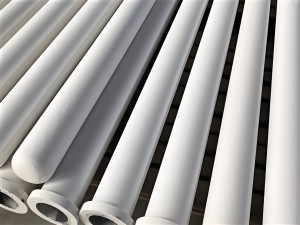
Purefrax® High Temperature Fiber Dust-Collecting Filter Tube
Core features:
Temperature resistance: Can operate continuously at 750℃, and withstand a temperature of 900℃ for an instant.
Filter performance: Pre-sprayed to form an embedded dust cake, achieving high filtration accuracy at the HEPA level, with 99% of particulate matter filtered on the surface. Actual performance shows that dust control can reach below 5mg/Nm³.
Service life: Up to 5 years or more.
Material and structure: Composed of silicic acid aluminum fibers and inorganic adhesives, resistant to acid and alkali corrosion; porosity > 80%; single unit weight is only 8.5kg, lower than similar products.rincipal Component Percentage Shape Dimensions Parameters Al₂O₃ 30% Length L MAX = 3000mm (customizable) SiO₂ 70% Outer Diameter O.D. = 150mm (customizable) - - Color White - - Density 370kg/m³ - - Long-term operating temperature ≤800℃ - - Filtering speed 0.8~1.2m/min - - Typical particulate emission ≤5mg/Nm³ -
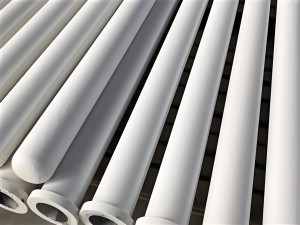
Ceramic Filters: The “Purification Experts” in Harsh High-Temperature Environments
Ceramic Filters: The “Purification Experts” in Harsh High-Temperature Environments
In the field of industrial dust removal, ceramic filters have become the core equipment for purifying high-temperature flue gas and corrosive gases due to their outstanding high-temperature resistance and corrosion resistance. They play an irreplaceable role in demanding industrial conditions such as waste incineration, coal-fired power generation, and metallurgy.1. Material and Structural Characteristics
The core filter materials of ceramic filters mostly use ceramic materials such as silicon carbide (SiC), aluminum oxide (Al₂O₃), and corundum. These materials have three significant advantages:
High-temperature resistance: The long-term operating temperature can reach 800-1200℃, and the instantaneous temperature resistance even exceeds 1400℃. It can directly handle high-temperature flue gas without the need for additional cooling equipment, reducing energy loss.Chemical stability: It has strong resistance to corrosive media such as acids, alkalis, and organic solvents. It is not easily eroded in sulfur-containing flue gas (such as from coal-fired power plants) and chlorine-containing exhaust gas (from waste incineration).
High mechanical strength: Excellent in compression and impact resistance, capable of withstanding the high-pressure air flow impact during pulse cleaning (usually 0.5-0.8MPa), and not prone to damage.
Its structure is mostly in the form of honeycomb or tube-like. The honeycomb filter is composed of hundreds of parallel micro-porous channels. The inner walls of the channels are covered with breathable holes with diameters ranging from 1 to 50 μm. The smoke gas flows into the channels, and the dust is retained on the hole walls. The clean gas passes through the micro-pores and is discharged. The tubular filter is similar to a bundle of ceramic tubes. The outer walls of the tubes are the filter layer. The dusty gas flows into the tubes from the outside, and the dust adheres to the tube walls. During cleaning, compressed air is sprayed from the inside of the tubes in the opposite direction to achieve dust removal. -
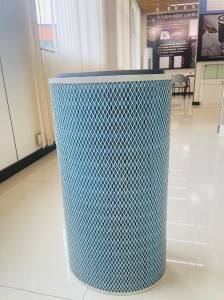
Factory-customized air filter elements
This is a cylindrical air filter element. An air filter element is an important component for filtering impurities in the air and is widely used in the intake systems of automotive engines, the air – intake devices of industrial mechanical equipment, air purifiers, and other equipment. Its principle is to utilize the filtering properties of the filter – element material to intercept pollutants such as dust, particles, and pollen in the air, providing clean air for the equipment.
This prevents these impurities from entering the interior of the equipment, avoiding component wear and blockages, and ensuring the normal operation and service life of the equipment. The corrugated structure design of the filter element in the picture increases the filtering area and can improve the filtering efficiency and dust – holding capacity.
